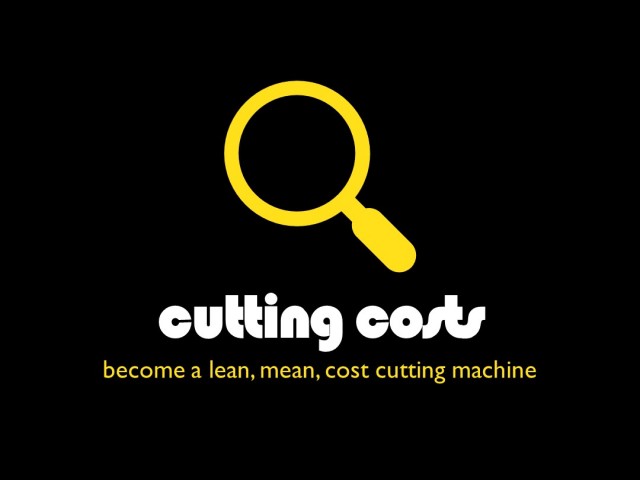A guide for cutting costs
Aug 9, 2020, 6:36 AM
Food is a tough business to be in. In a competitively saturated market, it is the leanest, most efficient businesses which are ultimately successful. As a food business operator, you should get as much excitement out of cutting costs as generating revenue. Here’s a cost-cutting guide to get excited about.
Labour costs
Let’s start with the most significant cost – wages. Use your P&L statement to calculate your labour cost (incl. super) to total sales ratio. Compare your ratio to Industry Standards to see how your business performs (see our post on creating a Performance Table HERE).
If your wages are higher than the Industry benchmark, then sales are not high enough to support your ongoing labour costs or your products are too labour intensive. Either way, it’s time to make a change!
So, cut wages or improve labour productivity? Do both.
Understand how every product is made and assembled, then consider where time-saving techniques or technology can be applied, or how outsourcing can be used.
Evaluate all labour on an individual basis. Is each role critical to the operation of the business? Can positions be merged? Can roles be eliminated? These are tough but important decisions.
Finally, don’t forget you! Typically, the most underutilized employee in an overstaffed company is you. Working on the business rather than in it gradually happens over time. Don’t consider yourself a ‘manager of corporate vision’ when your business is not big enough to justify such a position.
Other costs
Every other cost is up for review and negotiation (e.g. electricity, phone, internet, credit card, etc.). Before you make the calls, do your research, find alternative options and be prepared to switch to new suppliers/providers.
Be sure to check your workers compensation and insurance policies. Are they up-to-date? You might be paying more than you need.
Evaluate all recurring expenses (e.g. subscriptions) and stop as many as possible. It best to be aware of everything that comes out of your account. These ‘stealth expenses’ are often small amounts but quickly add up.
The best approach is to be brutal; cut as much as you can. If you're unsure, cut it anyway, it is always easy to add back in if necessary.
Debt
After some serious cost cutting, you have created space to get on top of any outstanding debt, such outstanding invoices or credit card debt.
Order your outstanding debt from smallest to largest and pay one debt off at a time starting with the smaller amounts. This approach gives you confidence and generates momentum.
Once you’re up-to-date with your supplier debt, look to shorten your credit terms with them. For a café/restaurant, you should be able to settle all outstanding invoices every two weeks or so. If not, your costs are too high relative to your revenue or you’re carrying too much stock.
The food industry is characterized by a short lag time between incurring the cost of goods and the sale of those goods. Longer credit terms delay the inevitable, creates earnings complacency and reinforces inefficiencies.
The takeaway
Cost cutting is not a one-off event. Costs need to be reviewed regularly - savvy operators are always looking for cuts. Food is a highly competitive industry, margins need to be supported by ongoing cost cutting, better waste management and a resolute quest for more efficient production.

